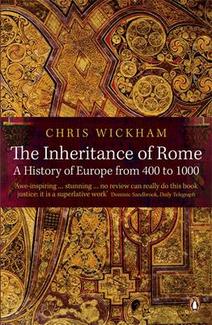
The Inheritance of Rome 400-1000
Chris Wickham
651 pages including index
published in 2009
The way you learn about history as a kid, both in school and through pop culture is as discrete chunks. You got your prehistory, your Bronze Age, your Greeks and Romans, your Biblical Times if you’re in an Christian school, your Middle Ages and so on and so weiter. It’s comprehensible, makes history all very neat and tidy and of course completely wrong. This is not a new truth of course, but it was driven home for me once again by Chris Wickham in The Inheritance of Rome, which is all about showing the continuity the Early Middle Ages had with the Late Roman Empire, without being blind to the ways in which Europe evolved away from its Roman era roots during this period. There is no bright line you can draw that divides these two eras.
Nor is there a Dark Age. As Wickham puts it in his introduction, the centuries between the Fall of Rome and the Central Middle Ages, between 400 CE and 1000 CE, tend to fit it awkwardly with the traditionally whiggish view of history as one of inevitable progress leading from antiquity to modern times, where Classic Antiquity can be seen as a vanished Golden Age, with the Renaissance or Late Middle Ages as the starting point for that story of inevitable progress, the centuries inbetween banished to the awkward limbo of the Dark Ages. When these centuries were treated in traditional history it was because that’s when modern European nations like France or England got their first start. Neither view sits well with Wickham, who argues that these essentially teleogical views of this transitional period, judging them in the context of what came after them, give the wrong image. You have to look at this time on its own terms rather than trying to glean the beginnings of future developments in it.